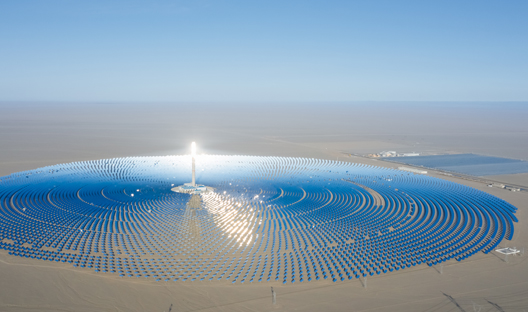Hydrogen production in South Africa – the fuel of a green future?
13 May 2021
South Africa’s energy stakeholders are working together to ensure we remain at the forefront in building a global, green hydrogen economy.
10 min read | 19 min podcast
Receive Focus insights straight to your inbox
After loadshedding added to the woes of South Africans at the start of 2021, there is a growing glimmer of light at the end of the tunnel. President Ramaphosa announced in June that the threshold for embedded power generation would be raised from 1MW to 100MW to allow private companies to power their own operations, without onerous licensing process. Minerals and Energy Minister Gwede Mantashe made this official in August when the new rules were laid out in the Government Gazette.

President Ramaphosa’s decision to significantly raise the private power generation cap is set to be a “game changer” for the South African economy. Our panel of experts from Sibanye-Stillwater, Intellidex, Pele Energy and Investec discuss the potential impact of the 100MW announcement.
The release of a request for proposals for bid window five of the long-awaited Renewable Energy Independent Power Producers Procurement Programme (REIPPPP) was launched in March, following a seven-year interruption. The goal is to procure 2 600 MW of new solar photovoltaic (PV) and wind capacity. Bid window six is scheduled to kick off on 28 September.
The role of an affordable, reliable and accessible power supply in the growth of the economy cannot be underestimated. Fortunately, Eskom's CEO Andre De Ruyter says there will be a substantial reduction in load shedding from September.
However, the President made it clear in his SONA speech that despite the progess being made on the maintenance of ageing Eskom power plants, "without additional capacity, there will be an electricity supply shortfall of between 4,000 and 6,000 megawatts over the next five years, as old coal-fired power stations reach their end of life."
It is clear that another model for the provision of electricity is needed.
In January, a Meridian Economics analysis proposed a 50 MW licence-exemption cap for distributed-generation – particularly solar, wind and battery storage projects that generate electricity at or near where it’s needed in the residential, commercial, industrial and agricultural sectors.
“Embedded generation should be an attractive proposition for South African corporates, because solar power provides for energy cost saving from day one. Embedded generation also increases the opportunity set for investments in independent power producers, as well as for local production of related equipment/technology and job creation in the sector," says Andre Wepener, head of Power and Infrastructure Investec.
France and the UK have set stringent deadlines of 2020 and 2025, respectively, to end carbon-based energy reliance, but SA's final Integrated Resource Plan (IRP), gazetted by government on 18 October 2019, still factors in the country's reliance on coal as being 58.8% of its total energy mix by 2030. Thermal power comprised 92.4% of South Africa's total power capacity in 2000 and decreased to 80% in 2019, still a long way off the goal of the IRP.
Investec's Wepener, however, is encouraged by the fact that the IRP signals a move towards reduced reliance on gas and diesel, an increase in solar PV and wind, and the easing of limitations on embedded generation or 'self-generators'.
"The IRP shows a significant decrease in reliance on carbon-based energy. By 2030, we will see a 32-gigawatt (GW) shift towards cleaner fuel, which includes 24GW of energy from renewal sources," he says.
"8.1 gigawatt-hours (GWh) of gas-fired power generation is expected to be up and running by 2030. Natural gas burns cleaner than coal and, in combination with renewables, ie solar and wind, can compensate for the baseload generation that will be removed from the energy mix as Eskom's existing coal-fired power stations reach the end of their useful lives."
READ MORE: Avoiding a new Malthusian trap – a better future without fossil fuels

The IRP shows a significant decrease in reliance on carbon-based energy. By 2030, we will see a 32-gigawatt (GW) shift towards cleaner fuel, which includes 24GW of energy from renewal sources.
The transition, however, is not a simple one. Coal provides the baseload power to industry, and there are limitations in both wind and solar as alternative energies when it comes to battery storage and consistency (even in sunny SA, the sun doesn't always shine and the wind does not always blow), he explains.
Nevertheless, battery storage innovation is continually improving, and it’s in an energy mix that the solution lies.
"There is a significant difference between us and European countries like the UK and France. They transitioned away from coal decades ago and moved towards gas, which is in abundant supply in the region," he says. SA is better compared with Australia, which has a significant reliance on carbon-based energy because both countries have rich coal resources.
Alternative energies provide solutions to both households and industry, Wepener says. At the lowest level, it could be a combination of solar panels on a roof and battery storage that supplies a household or small business with its energy requirements.
Another alternative that has been getting a lot of attention of late is green hydrogen. Dubbed "the fuel of the future", green hydrogen is produced without any carbon emissions (it emits only water vapour) using renewable sources of energy. Speaking on a webinar entitled: ‘Renewable hydrogen and green powerfuel opportunities for South Africa", Investec's Wepener addressed the huge growth potential that exists for South Africa if we're able to build a strong green hydrogen economy:
"With the cost of solar and wind power having fallen so dramatically over the past 10 years, it does create an opportunity for a cheap and reliable source of hydrogen, which is now possible for the production of green fuels. Advances in electrolysers and fuel technologies fuel cell technologies now mean that large-scale hydrogen production is cheaper and more accessible than ever before.
"The integration of green hydrogen to make liquid fuels and petrochemicals using established technologies is another exciting opportunity, which South Africa is in a prime position to exploit. There are substantial export opportunities for these green fuels and petrochemicals for South Africa.
"Another opportunity is that green hydrogen could also substitute fertilisers and explosive imports, where currently a material percentage of these are imported. And finally, the development of hydrogen fuel cells will create local demand for platinum where the metal is used as a catalyst. And the growth of these industries would really have two major knock-on effects of creating jobs and moving the country towards a lower carbon economy."
Wepener cites a study done by Jörg Peters of the University of Passau in Germany. The study looked at the effects of electrification on households in Rwanda, as well as its effects on firms, health centres and schools in that country's rural areas. It found that, contrary to expectations, electrification reduced expenditure on energy.
“The average amount that connected Rwandan households that spent on grid electricity was 1 500 RWF (about $2) a month, after they had replaced traditional energy sources like kerosene and batteries. And they no longer needed to spend money on charging their mobile phones outside their homes. In total, they reduced expenditure on energy by about $2.50, which is the equivalent of about 4% of their total monthly expenditure,” the study found.
This is apart from yielding other benefits to households which had done away with torches and wick or hurricane lamps. The study found that thanks to electrification, after-dark study time increased for children; it benefited micro-enterprises like hairdressing shops, small kiosks, bars and restaurants; and, significantly, it gave the community access to information.
The study concluded that because of the relatively low levels of energy consumption in rural areas – a mere 2 kilowatt-hours (kWh) per month, per person – off-grid solutions like solar would make more sense.
There has been much debate about whether renewables will cost South Africans more. "There is a lot of political noise about this, but the cost of renewables is coming down," Wepener says.
At a SingularityU Summit in SA, Ramez Naam, Co-Chair for Energy and Environment at Singularity University, talked about how alternative energies were disrupting traditional coal-based energy sources. He said moving towards renewables made sense both economically and morally, as there were significant health risks associated with carbon-based energy.
According to Naam, the more renewable energy is used, the less it costs. Bring innovation into the equation, and the benefits are clear-cut. He calls this a "virtuous circle", with prices of alternative energies coming down and, in the end, having the ability to produce electricity in some countries for as little as 5 to 6 US cents per kilowatt-hour (about 67c in South African currency).
Wepener says the cost has dropped even more in recent rounds of REIPPP, where tariffs were bid as low as 60-65c per kilowatt-hour. Consumers in some regions in SA are currently paying as much as R2.20 per kilowatt-hour.
Good news stories abound when it comes to renewables in SA. The Kathu CSP plant in the Northern Cape supplies Eskom with 100MW of power, lighting up 179,000 households, while saving six million tonnes of CO2 emmissions over a 20-year-period.
Another Northen Cape success story is the Bokpoort CSP plant, a greenfield Independent Power Project (IPP), has the largest thermal storage ever adopted for a similar operational size, providing nine hours of storage, and is among the most efficient solar plants in the world.
These will soon no longer be isolated good news stories, says Wepener.
Greenfield projects (projects that don't come with constraints imposed by prior work) are funded by the bank too, says Wepener. So, there is a package of investment opportunities for businesses within the renewable energy space.
Looking towards the future, Wepener says the next 20 years should bring an open and transparent power market. "We see a future where Eskom maintains the grid, and power producers and power consumers can trade power in accordance with their requirements, creating a win-win situation.
"Independent Power Producers (IPPs) will be substantial, private households that produce excess power and can push this back into the grid. The online trading of power, with the combination of IPPs, households and businesses, will mean the cost of electricity will be lower. Consumers and businesses will both benefit. Let the free market drive the process – that's what we hope to see."